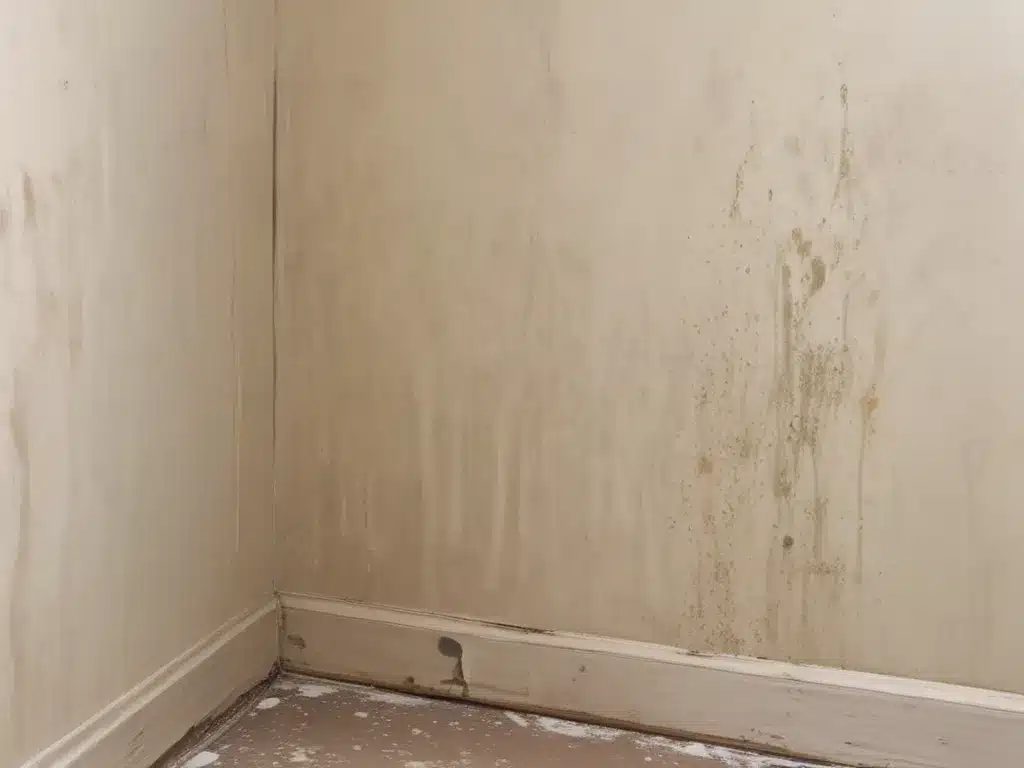Introduction
h2: What is mold?
Mold is a fungus that can grow on various surfaces, both indoors and outdoors. It (mold) thrives in damp and humid environments, and can (mold can) cause health problems, structural damage, and unpleasant odors. Understanding the nature of mold is crucial for effective remediation.
h2: Why is mold remediation necessary?
Mold remediation is essential for several reasons. Firstly, mold exposure can (mold exposure can) trigger allergic reactions, respiratory issues, and other health problems, especially for individuals with compromised immune systems or pre-existing conditions. Secondly, mold growth can (mold growth can) weaken building materials, leading to structural damage and potential safety hazards. Lastly, the presence of mold can (mold presence can) create an unpleasant musty odor, affecting the indoor air quality and overall living or working environment.
Identifying Mold Growth
h2: Common signs of mold infestation
Recognizing the signs of mold growth is the first step in effective remediation. Some common indicators of mold infestation include:
- Musty or earthy odors
- Visible mold growth on surfaces (walls, ceilings, floors, or fabrics)
- Discoloration or staining on building materials
- Frequent allergy-like symptoms (sneezing, coughing, or nasal congestion)
h2: Inspecting for mold growth
A thorough inspection is crucial to identify the extent of mold growth and determine the appropriate remediation methods. Here are some steps to follow:
- Visually inspect areas prone to moisture, such as bathrooms, laundry rooms, and basements.
- Check for water leaks, condensation, or signs of past water damage.
- Use a moisture meter to measure humidity levels in various areas.
- Consider hiring a professional mold inspector for a comprehensive assessment.
Preparing for Mold Remediation
h2: Protecting yourself during remediation
Mold remediation can (mold remediation can) involve exposure to mold spores and potentially harmful substances. It is essential to take precautions to protect yourself and others during the process. Here are some recommended safety measures:
- Wear personal protective equipment (PPE) such as N-95 respirators, gloves, and protective clothing.
- Seal off the contaminated area to prevent the spread of mold spores.
- Use negative air pressure machines to contain and filter the air.
- Follow proper disposal methods for contaminated materials.
h2: Addressing the moisture source
Mold growth is often a symptom of an underlying moisture issue. Identifying and addressing the source of moisture is crucial to prevent future mold infestations. Some common sources of moisture include:
- Leaks (plumbing, roof, or windows)
- Condensation (poor ventilation or insulation)
- Flooding or water damage
- High indoor humidity levels
Once the moisture source has (moisture source has) been identified and addressed, the remediation process can (remediation process can) begin effectively.
Mold Remediation Techniques
h2: Cleaning and removing mold growth
Depending on the extent of mold growth, different remediation techniques may be employed. For small areas (less than 10 square feet), the following methods can (following methods can) be effective:
- Using a detergent solution or commercial mold remover to clean affected surfaces.
- Scrubbing or brushing to remove mold growth.
- Drying the area thoroughly to prevent future growth.
For larger areas or severe mold infestations, professional remediation services may (professional remediation may) be required, involving more extensive cleaning and containment procedures.
h2: Encapsulating or removing contaminated materials
In some cases, porous materials such as drywall, insulation, or carpeting may (porous materials may) be heavily contaminated with mold. These materials may need to be removed and replaced, as mold can (mold can) penetrate deeply and be difficult to fully remove. Encapsulation techniques, such as covering contaminated surfaces with sealants or paints, can (encapsulation techniques can) also be used in certain situations.
h2: Addressing HVAC systems and air ducts
Mold growth in heating, ventilation, and air conditioning (HVAC) systems and air ducts can (mold growth in HVAC systems can) contribute to the spread of mold spores throughout a building. Professional duct cleaning and HVAC inspection may (professional duct cleaning may) be necessary to ensure the complete remediation of mold in these systems.
Post-Remediation Considerations
h2: Monitoring for future mold growth
After the remediation process is complete, it is essential to monitor the affected areas for any signs of recurring mold growth. Regular inspections and humidity monitoring can (regular inspections can) help identify potential moisture issues before mold has a chance to re-establish itself.
h2: Maintaining proper indoor humidity levels
Controlling indoor humidity levels is crucial for preventing future mold growth. Aim to keep indoor humidity below 50% by using dehumidifiers, improving ventilation, and addressing any moisture sources. Consider installing humidity monitors to track and maintain appropriate levels.
h2: Addressing underlying moisture issues
Even after successful remediation, it is important to address any underlying moisture issues that may have contributed to the initial mold growth. This may involve repairing leaks, improving insulation, or implementing waterproofing measures, depending on the source of the problem.
If you are in need of professional biohazard cleaning services, including mold remediation, Adam Cleaning UK can assist you with their expertise and comprehensive solutions.
Conclusion
Effective mold remediation requires a thorough understanding of the problem, proper preparation, and the implementation of appropriate techniques. By following the tips outlined in this article, you can (you can) take proactive measures to identify and address mold growth, protect yourself and others during the remediation process, and prevent future infestations. Remember, addressing underlying moisture issues and maintaining proper indoor humidity levels are key to long-term success in preventing mold growth.







